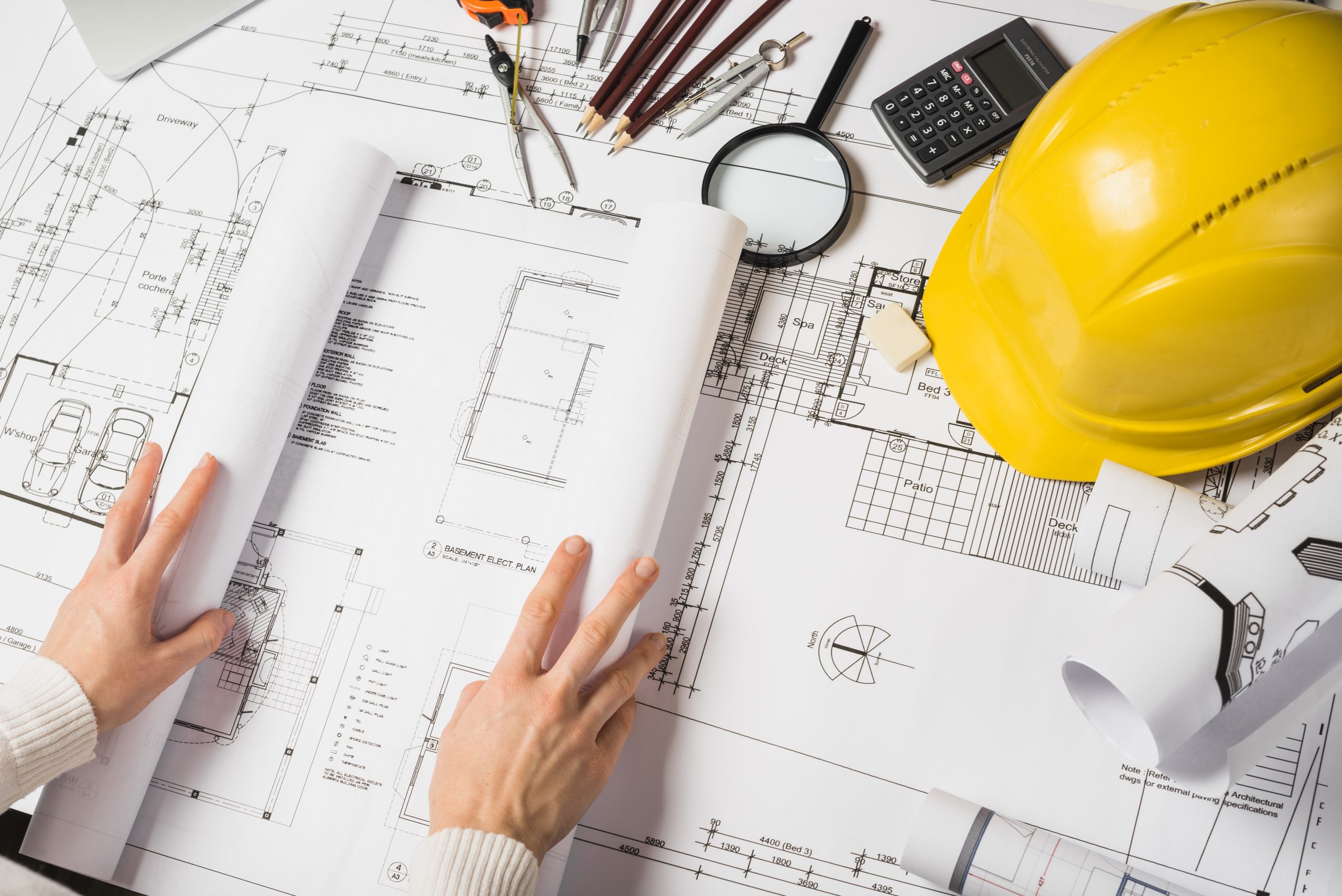Architect Interview Questions You Should Be Ready to Answer
Architect Interview Questions You Should Be Ready to Answer
Blog Article
Comprehending the Diverse Occupation Paths Available for Aspiring Architect
As an aspiring Architect, you have a world of career courses waiting for you. Whether you're drawn to typical design or the subtleties of lasting design, there's a particular niche that lines up with your passions.
Traditional Style: Creating Buildings and Frameworks
Standard architecture focuses on designing structures and structures that blend performance with aesthetic charm. Your styles can mirror social heritage, showcasing local traditions while fulfilling modern demands.
You'll create skills in drafting, model-making, and website evaluation, enabling you to imagine and communicate your ideas successfully. Involving with customers, you'll require to understand their vision and convert it right into viable layouts.
Additionally, building codes and sustainability practices are important in your work, guaranteeing your frameworks are risk-free and environmentally friendly. As you grow in your profession, you'll find opportunities in residential, commercial, and even restoration projects, each offering unique challenges. Accepting standard design leads the way for a satisfying profession that admires the past while shaping the future.
Urban Preparation: Forming Communities and Public Spaces
As an ambitious Architect, you can play a crucial function as a metropolitan organizer, transforming exactly how areas function and connect. By employing area interaction methods, you'll ensure that locals have a voice in shaping their setting. And also, integrating sustainable style principles will assist develop spaces that not only fulfill today's needs but additionally protect the future.
Role of Urban Planners
While several may think about engineers as the sole dreamers behind structures, city coordinators play a crucial duty fit the more comprehensive landscape of areas and public rooms. They examine land usage, zoning legislations, and area needs to create sustainable settings that boost high quality of life. By working together with various stakeholders, you'll assist create parks, transportation systems, and property areas that promote social interaction and ease of access. Urban planners likewise concentrate on environmental factors to consider, guaranteeing that developments integrate eco-friendly areas and support biodiversity. Your proficiency in spatial style and area characteristics permits you to visualize future growth while protecting social heritage. In this important role, you'll directly affect just how people experience their environments, making every job an opportunity for positive adjustment.
Area Involvement Strategies
Efficient community involvement approaches are important for urban organizers to assure that the voices of locals are listened to and valued in the preparation process. To cultivate meaningful dialogue, you need to prioritize open discussion forums and workshops where community participants can reveal their ideas and concerns. Usage studies and social media sites to reach a more comprehensive target market, making certain varied perspectives are consisted of. Working together with local companies can boost trust and help with much deeper connections. It is essential to supply clear details about proposed projects and decision-making processes, permitting locals to really feel enlightened and empowered. By actively listening and integrating responses, you'll develop spaces that reflect the area's requirements, inevitably resulting in even more effective and lasting urban environments. Welcome transparency and constant dialogue for enduring impact.
Lasting Layout Principles
When developing city rooms, integrating lasting layout concepts is essential for creating environments that flourish both environmentally and socially. You ought to begin by focusing on power effectiveness, utilizing products that decrease waste and promote recycling. Think about incorporating environment-friendly areas, like parks and yards, to boost biodiversity and improve air top quality. Advertising walkability and public transportation can decrease reliance on vehicles, fostering a much healthier area.
Designing with water conservation in mind is also crucial-- believe about rainfall yards and permeable surfaces to manage stormwater. Including neighborhood participants during the preparation process guarantees that the rooms you develop meet their requirements and urge social interaction. By accepting these principles, you'll add to lively, lasting city landscapes that profit every person.

Landscape Architecture: Developing Lasting Exterior Atmospheres
As you explore landscape style, you'll discover necessary style principles that create useful and lovely outdoor rooms. Sustainable techniques play an essential function in making certain these settings prosper while minimizing ecological impact. Plus, you'll discover a selection of profession possibilities that allow you to make an actual distinction in just how individuals communicate with nature.
Layout Principles in Landscape
Recognizing style principles in landscape style is vital for creating lasting exterior settings that integrate with nature. You'll require to contemplate components like range, balance, and proportion to assure your styles feel cohesive and inviting. Additionally, pay focus to seasonal adjustments, developing with materials that match the environments year-round.
Lasting Practices Overview
Sustainable methods in landscape architecture not just focus on aesthetics yet also prioritize ecological wellness and source conservation. By incorporating indigenous plants, you enhance biodiversity and reduce the demand for chemical plant foods and chemicals. Carrying out effective irrigation systems helps save water and lessens overflow, protecting nearby communities. You can make rooms that promote soil wellness, such as using organic products and practicing permaculture principles. In addition, integrating environment-friendly infrastructure, like rain yards and permeable sidewalks, help in stormwater monitoring and reduces metropolitan warmth. When you produce outdoor settings with sustainability in mind, you add to a healthier earth and provide areas that foster area link. Ultimately, these methods ensure your designs benefit both people and the setting for several years to come.
Career Opportunities Expedition
With a solid structure in sustainable practices, landscape architecture uses a variety of job courses that allow you to make a significant impact Look At This on the setting. You can work as a landscape designer, creating visually pleasing and practical outdoor spaces, or focus on ecological reconstruction, assisting to revive damaged environments. Urban organizers often collaborate with landscape architects to create eco-friendly rooms in urban setups, boosting city livability. If you're passionate regarding education, take into consideration becoming a landscape style educator, motivating future generations. Furthermore, you may collaborate with nonprofits focused on environmental sustainability or participate in study to introduce brand-new practices. Each path not only forms attractive environments however likewise promotes a healthier world for future generations.
Lasting Layout: Focusing on Eco-Friendly Practices
As you discover your profession in style, accepting environment-friendly practices can set you apart in an affordable field. Lasting layout focuses on producing structures that reduce ecological impact while improving occupant wellness. By here are the findings including renewable materials, energy-efficient systems, and lasting structure techniques, you'll add to a greener future.
Begin by gaining understanding of eco-friendly accreditations like LEED or BREEAM, which can strengthen your credentials. Think about exactly how all-natural light, air flow, and thermal efficiency can enhance style. Team up with engineers and environmental specialists to introduce remedies that decrease waste and preserve resources.
Do not forget the value of neighborhood participation-- interesting neighborhood stakeholders can motivate layouts that harmonize with the environment. As clients increasingly prioritize sustainability, your expertise in environmentally friendly methods will not only draw in tasks yet additionally accomplish your interest for liable style. Welcome this critical facet of the career, and see your job prosper.
Historical Conservation: Securing and Bring Back Cultural Heritage
While you commence on your building trip, take into consideration the necessary function of historic preservation in maintaining our social heritage. This area concentrates on the security and repair of considerable buildings, websites, and frameworks that tell the tales of our past. By taking part in historic conservation, you'll aid secure the architectural legacy that forms area identification.
As a historic preservation Architect, you'll assess historic importance and evaluate the problem of structures. You'll function carefully with historians and preservationists to assure genuine remediation methods are employed. This occupation path enables you to mix imagination with study, enabling you to make services that value original products and workmanship.
Your work not just contributes to sustainability by reusing existing structures but likewise cultivates a feeling of pride within communities. Embracing this path will aid you end up being a guardian of background, protecting the tales and aesthetics that enhance our lives.
Inside Architecture: Enhancing Indoor Spaces
Historic conservation and indoor architecture both share a commitment to improving the constructed environment, however they concentrate on various aspects. While historic preservation highlights keeping a framework's historical and cultural worth, indoor style zeroes in on optimizing indoor areas for performance and appearances.
As an aspiring Architect, you'll locate that indoor architecture allows you to blend imagination with technical skills. You'll create rooms that not just look excellent yet additionally advertise convenience and performance. This area entails recognizing just how light, shade, and products connect within a room, influencing state of mind and use.
You'll work with numerous tasks, from household homes to business workplaces, making certain that each setting fulfills the needs of its residents. By prioritizing user experience, you can change insides right into inspiring and functional rooms, making a substantial effect on exactly how people communicate with their surroundings. Welcome the possibility to improve indoor environments and form the way people live and function.
Industrial Style: Merging Capability With Appearances
Commercial style plays a vital role in developing products that perfectly mix looks with performance, ensuring that what you make use of everyday is not just aesthetically appealing yet likewise practical. As a hopeful Architect, try this you can immerse on your own in this field, concentrating on creating everything from furnishings to consumer electronic devices. Your work includes understanding individual needs, products, and manufacturing procedures, allowing you to produce innovative options that enhance daily experiences.
In industrial style, you'll often work together with online marketers, designers, and manufacturers, guaranteeing that your styles are not just lovely but likewise viable. You'll learn to balance form and feature, focusing on usability without sacrificing design. By sharpening your skills in sketching, 3D modeling, and prototyping, you'll be fully equipped to bring your concepts to life. This job path offers a dynamic setting where creative thinking meets practicality, making it a gratifying option for designers curious about forming the items of tomorrow.
Frequently Asked Inquiries
What Educational Accreditations Do I Need to Become an Architect?
To come to be a designer, you'll need a specialist degree in architecture, commonly a Bachelor's or Master's. Furthermore, you'll have to finish an internship and pass the Architect Registration Examination to exercise legally.
Exist Accreditation Requirements for Various Architectural Occupation Paths?
Yes, there're certification needs for various building paths. Architect. You'll require to pass exams, total internships, and occasionally pursue specialized training, relying on your chosen emphasis, like landscape architecture, city style, or historical preservation
What Software Abilities Are Important for Engineers Today?

Just How Can I Gain Practical Experience While Examining Design?
You can gain sensible experience by interning at architectural firms, taking part in layout competitions, offering for area jobs, or working together with classmates on real-world projects. These possibilities enhance your abilities and build useful connections in the market.
What Job Opportunities Exist Outdoors Traditional Design Firms?
You can explore different work opportunities outside standard architecture firms, like city preparation, interior layout, landscape design, construction management, property advancement, or perhaps functions in sustainability consulting. Each deals distinct challenges and incentives.
Whether you're drawn to typical architecture or the subtleties of lasting design, there's a niche that lines up with your interests.When designing city spaces, integrating sustainable layout concepts is critical for developing settings that thrive both ecologically and socially.As you explore landscape architecture, you'll discover important design concepts that produce useful and stunning exterior spaces.Understanding style principles in landscape style is vital for developing lasting outdoor atmospheres that integrate with nature.In commercial design, you'll usually collaborate with producers, marketing professionals, and designers, making sure that your styles are not only attractive but also viable.
Report this page